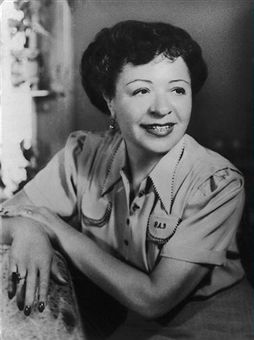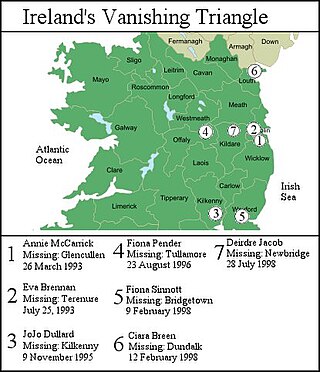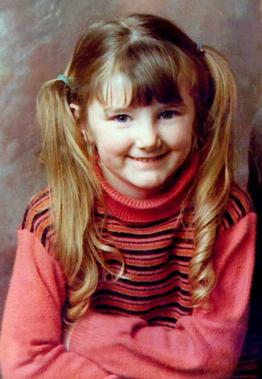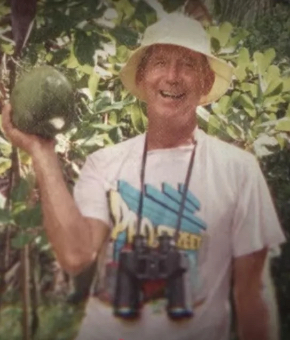
The Bermuda Triangle, also known as the Devil's Triangle, is a loosely defined region between Florida, Bermuda, and Puerto Rico in the southwestern North Atlantic Ocean where a number of aircraft and ships have disappeared under mysterious circumstances. The idea of the area as uniquely prone to disappearances arose in the mid-20th century, but most reputable sources dismiss the idea that there is any mystery.

Kristin Denise Smart was a 19-year-old American woman murdered by Paul Flores at the end of her first year on the campus of California Polytechnic State University, San Luis Obispo.

A presumption of death occurs when an individual is believed to be dead, despite the absence of direct proof of the person's death, such as the finding of remains attributable to that person. Such a presumption is typically made by an individual when a person has been missing for an extended period and in the absence of any evidence that person is still alive—or after a shorter period, but where the circumstances surrounding a person's disappearance overwhelmingly support the belief that the person is dead. The presumption becomes certainty if the person has not been located for a period of time that has exceeded their probable life span, such as in the case of Amelia Earhart or Jack the Ripper.

Susannah Jane Lamplugh was a British estate agent reported missing on 28 July 1986 in Fulham, London, England, United Kingdom. She was officially declared dead, presumed murdered, in 1993. The last clue to Lamplugh's whereabouts was an appointment to show a house in Shorrolds Road to someone she called Mr. Kipper. The case remains unsolved with Lamplugh still missing, and is considered the world's biggest-ever missing person's inquiry.
Richard Tofel is the principal of Gallatin Advisory, a journalism consultancy, and former president of ProPublica, a nonprofit investigative journalism organization.

Pearl "Polly" Adler was an American madam and author, best known for her work A House Is Not a Home, which was adapted into a film of the same name. In 2021, Pulitzer Prize–winning historian Debby Applegate published a comprehensive account of Adler's life and times entitled Madam: The Biography of Polly Adler, Icon of the Jazz Age with Doubleday.
Helen Marie Brach was an American multimillionaire widow whose wealth had come from marrying into the E. J. Brach & Sons Candy Company fortune; she endowed the Helen V. Brach Foundation to promote animal welfare in 1974. Brach disappeared on February 17, 1977, and was declared legally dead, as of the date of her disappearance, in May 1984. An investigation into the case uncovered serious criminal activity associated with Chicago horse stable owners, including Silas Jayne and Richard Bailey. More than a decade later Bailey was charged with, but not convicted of, conspiring to murder Brach; he eventually received a sentence of 30 years after being convicted of defrauding her.

On 21 April 2001, Hannah Williams, a 14-year-old English schoolgirl was murdered after going missing during a shopping trip in Dartford, Kent. Williams's body was discovered on 15 March 2002 at a cement works in an industrial area of Northfleet.
Romona Moore was a 21-year-old Hunter College honors student who disappeared April 24, 2003, in Brooklyn, New York. Two months later, her body was discovered outside an abandoned house which an anonymous caller had directed her mother to. Two male suspects were arrested; they were convicted in 2006 of having kidnapped, raped, tortured, and murdered Moore. The young immigrant from Guyana had been living at home with her parents and relatives before she was kidnapped.

Mack Ray Edwards was an American child molester and serial killer who molested and murdered at least six children in Los Angeles County, California, between 1953 and 1970. Sentenced to death, he hanged himself in his prison cell.

Maura Murray is an American woman who disappeared on the evening of February 9, 2004, after a car crash on Route 112 near Woodsville, New Hampshire, a village in the town of Haverhill. Her whereabouts remain unknown. Murray was a 21-year-old nursing student completing her junior year at the University of Massachusetts Amherst at the time of her disappearance.

Peter Britton Tobin was a Scottish convicted serial killer and sex offender who served a whole life order at HM Prison Edinburgh for three murders committed between 1991 and 2006. Police also investigated Tobin over the deaths and disappearances of other young women and girls.

Barbara Newhall Follett was an American child prodigy novelist. Her first novel, The House Without Windows, was published in January 1927, when she was twelve years old. Her next novel, The Voyage of the Norman D., received critical acclaim when she was fourteen.

Ireland's Vanishing Triangle is a term commonly used in the Irish media when referring to a number of high-profile disappearances of Irish women from the late 1980s to the late 1990s. Several other women were also murdered within the triangle and their cases remain unsolved as well. All of the cases appeared to share some common characteristics. The women's ages range from their late-teens to late-30s, they disappeared inexplicably and suddenly, and no substantial clues or evidence of their fate has ever been found despite large-scale searches and campaigns by the Gardaí to find them. Gardaí believe their remains are likely to be buried in remote fields, bogs and forests. The triangle is in the eastern part of the island, roughly the boundaries of Leinster, in an 80-mile area outside Dublin.
Lauren Elizabeth Spierer is an American woman who disappeared on June 3, 2011, following an evening at Kilroy's Sports Bar in Bloomington, Indiana. At the time, Spierer was a 20-year-old student at Indiana University. Though her disappearance generated national press coverage, Spierer is presumed dead and her case remains unsolved.

Mary Boyle was a six-year-old Irish girl who disappeared on the County Donegal-County Fermanagh border on 18 March 1977. To date, her disappearance is the longest missing child case in the Republic of Ireland. The investigation into her disappearance has been beset by allegations of political intervention and police incompetence.

Jennifer Dulos was an American woman who went missing on May 24, 2019. Authorities believe that she was killed in an attack at her home in New Canaan, Connecticut, United States. Her estranged husband, Fotis Dulos, and his girlfriend, Michelle Troconis, were arrested on charges of tampering with evidence and hindering prosecution in connection with Jennifer's disappearance. Later, the two – along with Fotis's attorney Kent Mawhinney – faced additional charges related to Jennifer's murder.

Jack Donald Lewis was an American missing person who disappeared on the morning of August 18, 1997, after leaving his home in Tampa, Florida. The investigation into his disappearance has stretched from Lewis's Wildlife on Easy Street sanctuary in Tampa, co-owned with his second wife Carole Baskin, to land owned by Lewis in Costa Rica. No evidence has surfaced that Lewis was the victim of a crime, but friends, family, and investigators believe it is unlikely that he disappeared by choice because he had been executing business plans that were left unfinished. Lewis left behind over US$5 million in assets. He was declared legally dead in 2002 on the fifth anniversary of his disappearance.
Dee Ann Warner was a woman who disappeared from Franklin Township, Michigan, on April 25, 2021, in a suspected murder. Dee’s body was discovered by police on August 17, 2024 while executing a search warrant on Dale Warner’s Paragon Road property. Dee’s body was discovered in a resealed anhydrous tank, similar to a residential propane storage tank. On November 22, 2023, her husband, Dale John Warner, was charged in the State of Michigan for her murder.














